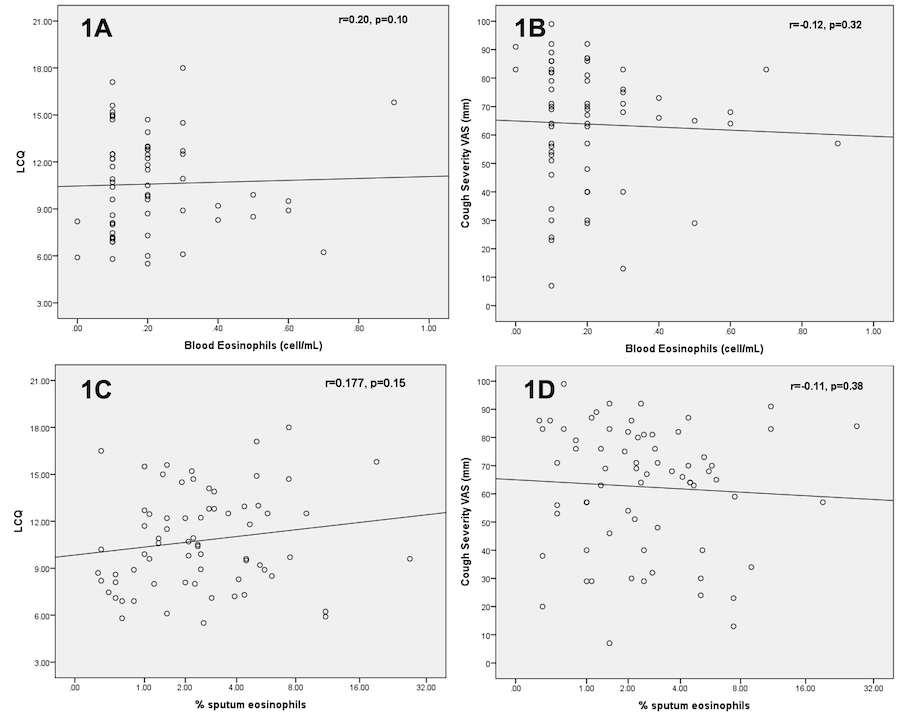Abstract
Backgroud: The relationship between peripheral blood and sputum eosinophilia and patient reported outcomes (PROs) in patients with chronic cough (CC) remains unclear.
Objective: We aimed to evaluate correlations between peripheral blood and sputum eosinophilia with cough PROs including the Leicester Cough Questionnaire (LCQ) and cough severity Visual Analogue Scale (CS-VAS).
Methods: We analyzed patients with CC who had their blood and sputum eosinophils, LCQ, and CS-VAS assessed at baseline prior to treatment in two separate studies. Spearman?s rank correlation coefficients were calculated.
Results: Seventy participants [mean age (S.D.) 58.0±13.2, 59% female, cough duration 9.6±8.8 yrs] were included in the analysis. At baseline, patients had mean scores of 10.7±3.1 on the LCQ and 62.7 mm (±22.1) on the VAS. Their median (IQR) peripheral blood eosinophils was 0.2 cells/L (0.1-0.25) and % sputum eosinophils was 2.3% (1.1-4.5). We found weak non-significant correlations between peripheral blood and sputum eosinophilia with LCQ and CS-VAS (Figure 1).
Conclusion: In patients with CC, type II biomarkers poorly correlated with subjective cough PROs at baseline. Prospective data of changes after treatment should evaluate whether biomarkers of inflammation can predict improvement in cough.
